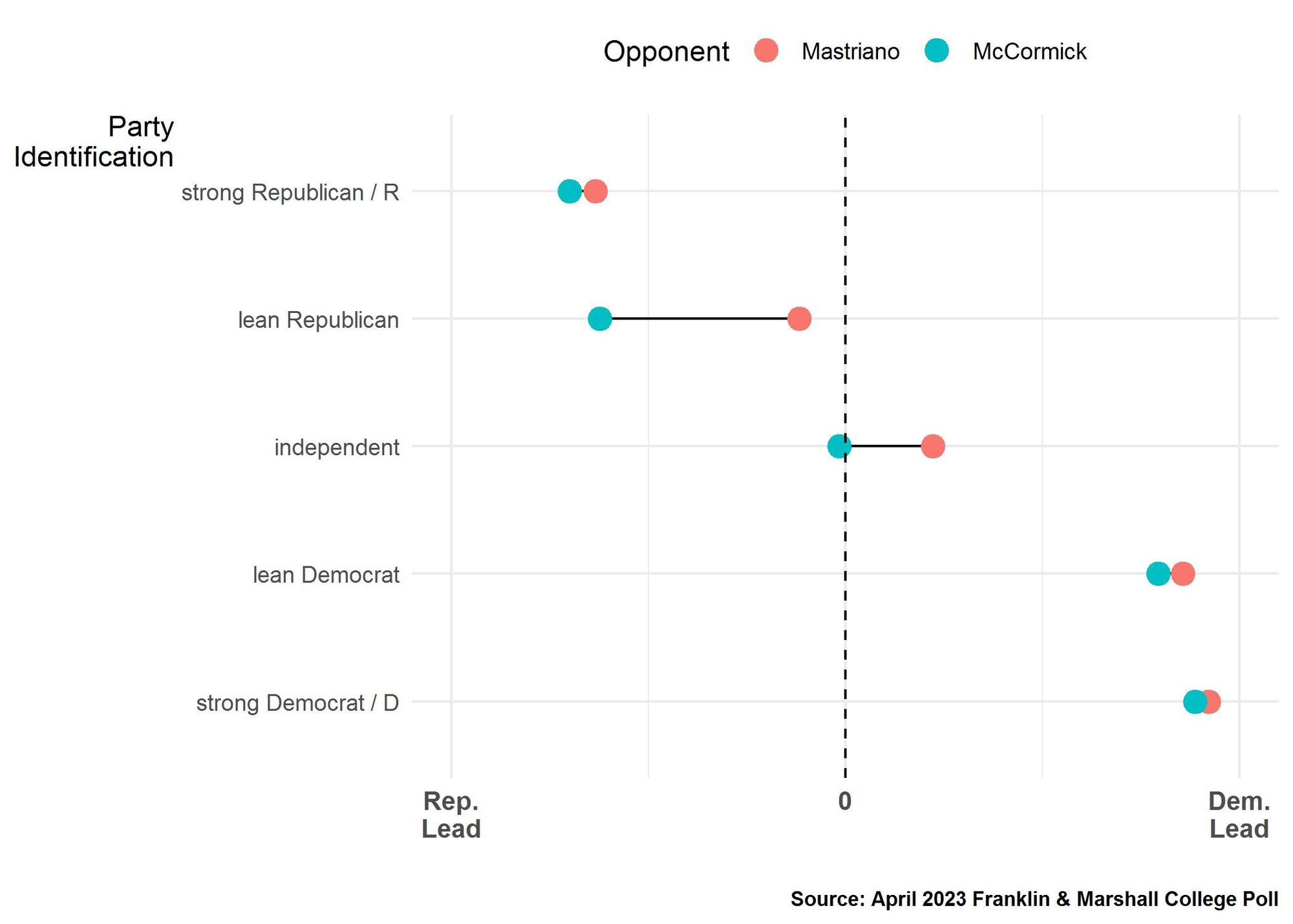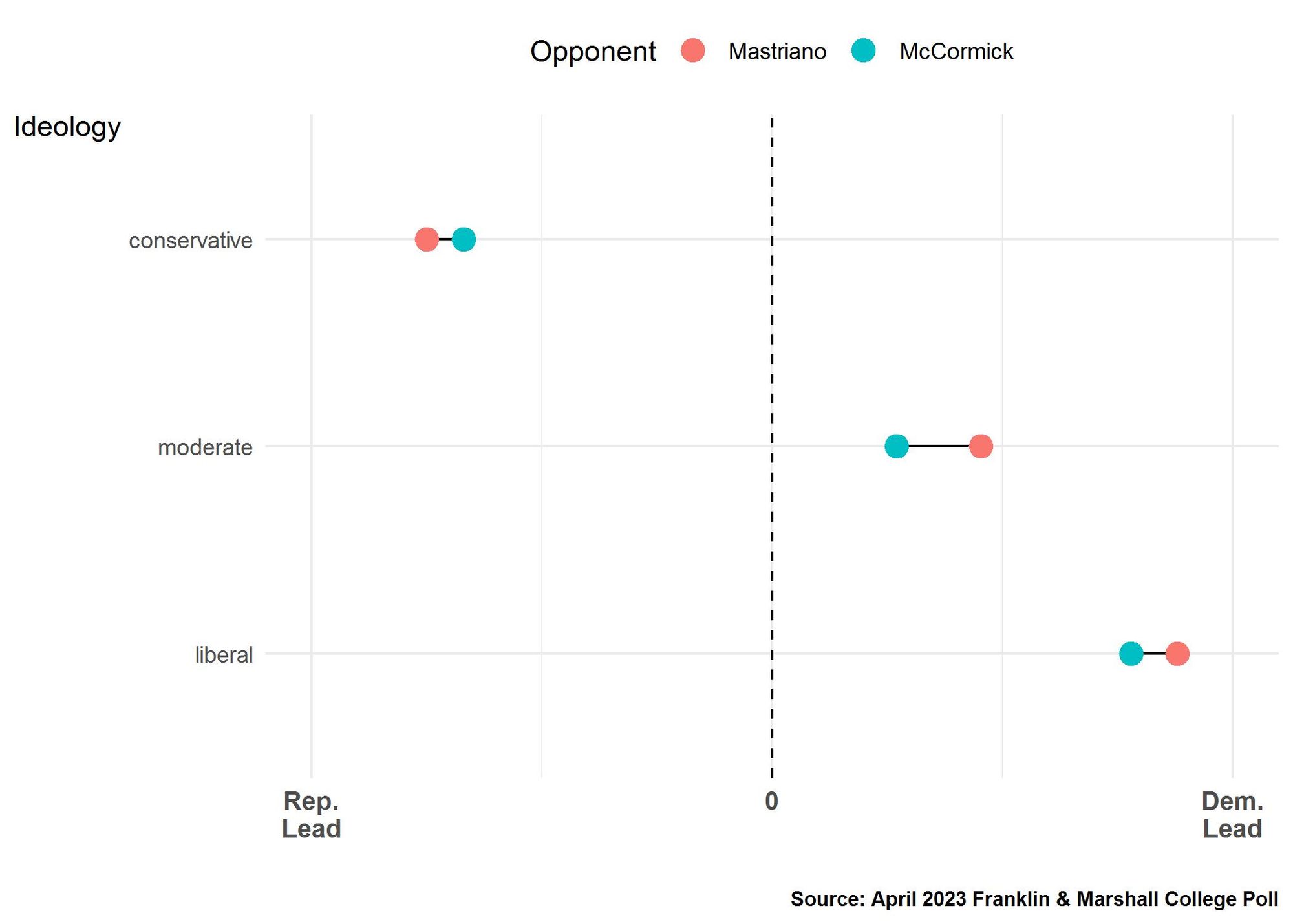Looking Ahead to the 2024 U.S. Senate Race
What can the April F&M poll tell us about the relative appeal of the two Republicans who have discussed running in Pennsylvania? We take a look at Senator Casey's chances against both Doug Mastriano and David McCormick.
Dear Readers,
This month we take a deeper look at data we collected about the state’s 2024 U.S. Senate race in our April Franklin & Marshall College Poll. Our survey allows us to make direct comparisons about the relative general election appeal of the two Republicans who have discussed running for senate. Patterns within our data mirror patterns evident during the 2022 midterms, and suggest the choice of Republican primary voters will be as important as the electoral environment in Senator Casey’s chances of re-election.
Thank you for reading,
Berwood Yost
Overview of the 2024 Senate Race
Next year at this time, Republican primary voters will be choosing their candidate to challenge incumbent US Senator Bob Casey in the 2024 election. Two candidates are currently mentioned as the leading challengers for the Republican nomination: State Senator Doug Mastriano and the former CEO of Bridgewater Associates, David McCormick.
Political handicappers generally believe Casey has a slight advantage heading into the election, but there is also an acknowledgement that his advantage will be determined as much by the quality of his opponent as by voters’ judgments about his record and his ties to the Biden administration.
Casey’s current job approval rating won’t scare off a motivated opponent; only 29% of registered voters believe he is doing an excellent or good job. His ratings among political independents are dismal, with only one in five (21%) rating his performance positively. His current ratings are lower than they were in October 2018, prior to his last election, when he had a 43% positive job approval rating and cruised to an easy 13 point re-election victory over Lou Barletta. Yet, his job approval ratings are the same as they were in March 2011 (29%), about one year prior to his first re-election campaign, when he beat Republican Tom Smith, a farmer and former coal company executive, by nine points. Senator Casey undoubtedly benefited from facing weak challengers in both of his previous re-election campaigns. Might that happen again?
Pundits and party operatives speak often about the importance of candidate quality as they discuss the 2024 races. Many commentators believe Republicans squandered the advantages provided by inflation, a faltering economy, and an unpopular president in the 2022 midterms because they fielded weak statewide candidates in winnable races, including Pennsylvania. There is a debate raging within the Republican Party right now about whether a McCormick or a Mastriano candidacy presents a better path to victory.
The State of the Race Today
The April Franklin & Marshall College Poll showed that, despite his subpar job approval ratings, Senator Casey led both McCormick (42% to 35%) and Mastriano (47% to 31%) in a head-to-head matchup. Do these results provide any early hint about which candidate is a more formidable challenger?
The way we matched these potential challengers against Senator Casey in our survey gives us the ability to provide some objective assessments about the viability of both candidates. Instead of asking respondent preferences by matching each candidate against the Senator in separate matchups, poll participants were randomly assigned a question that matched Senator Casey against either McCormick or Mastriano. This is called a split-ballot experiment, which uses a random procedure to assign different forms of a question to survey participants. Properly designed, these experiments create groups of people who are identical in all ways except for the form of the question they receive.[i] When differences appear in a split-ballot experiment, they are the result of the question’s wording (in this instance, the different candidate) and not the result of who was asked the question.
Figure 1 compares each candidate’s relative performance against Casey based on party identity, and the responses of self-described independent voters are informative. The blue dot represents respondents who were asked to choose between Casey and McCormick and it shows a virtual tie among independents (Casey 23% and McCormick 24%, which is a one-point Republican advantage) in this matchup. For those independents who were asked to choose between Casey and Mastriano (the red dot) the Democrat has a 22 point advantage (36% to 14%).

The other telling gap is among respondents who say they lean Republican. Both Republicans led Casey among these partisan leaners, but McCormick leads Casey by 60 points while Mastriano only leads Casey by 12 points among this group.
McCormick’s broader appeal to less partisan-aligned general election voters carries over to less ideological voters as well. Figure 2 demonstrates that the pattern among independents is also evident for self-described moderates: Casey’s advantage is smaller when facing McCormick (he leads by 27 points, 53% to 26%) than when facing Mastriano (he leads by 46 points, 61% to 15%).

Tentative Conclusions
Even considering the timing of our survey and the variability associated with estimates generated from relatively small subgroups, this data suggests that McCormick is currently the more competitive candidate in a head-to-head general election race against Casey. McCormick currently has that advantage because he fares better among less partisan and less ideological voters.
McCormick’s appeal to more moderate voters would seem to offer Republicans a credible alternative for challenging Casey, but he needs to get through a Republican primary race for that to happen. At the moment, though, conservatives are the only partisan or ideological subgroup where Mastriano runs better against Casey than McCormick. And of course, this is the group that will largely decide the Republican nominee in 2024.
Everyone expects the 2024 US Senate race in Pennsylvania to be close, with good reason. The state has held eight US Senate races since 2000 and each party has won four of them. The average vote share in these races affirms how closely contested they have been: Democratic candidates averaged 49.4% of the vote and Republican candidates averaged 48.5%.
But the other truth is that Senator Casey has never been seriously challenged in his prior re-election campaigns because he’s never faced a top-tier opponent. The question is, will he face a top-tier candidate in 2024?
[i] Statistical tests of the randomization process showed no significant differences between the assigned groups on party registration or demographic characteristics such as age, gender, race, or region of the state.
Franklin & Marshall College Poll Newsletter
Join the newsletter to receive the latest updates in your inbox.
